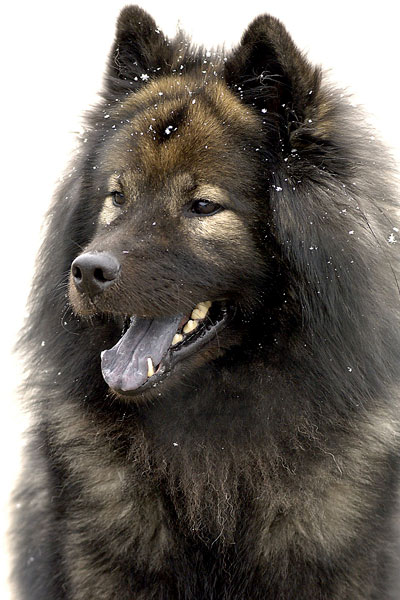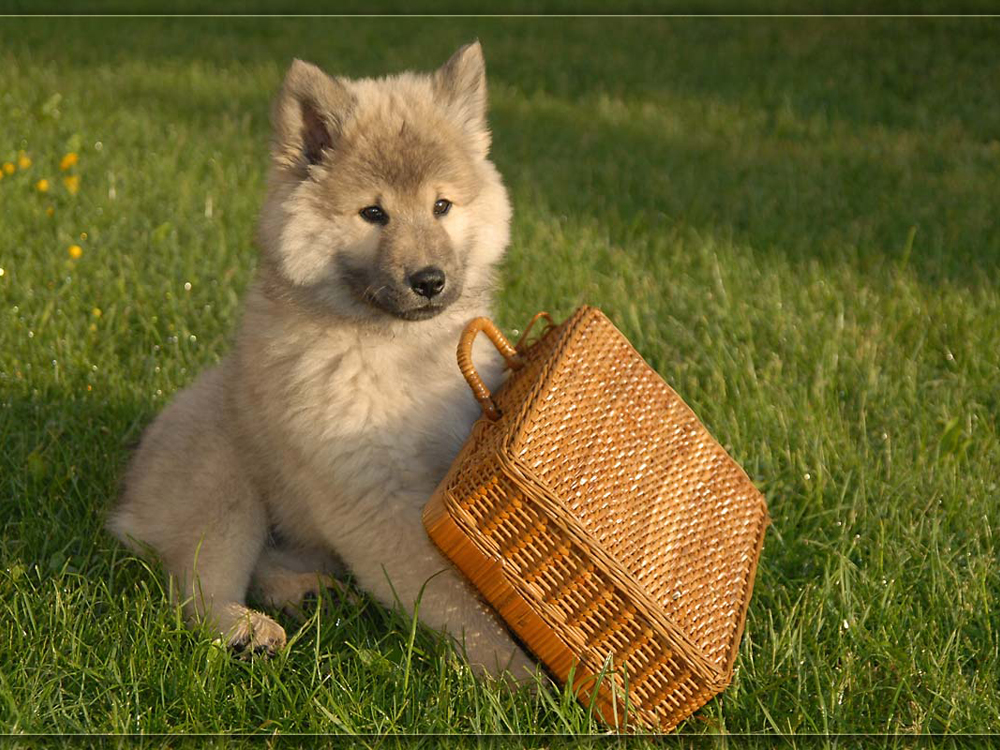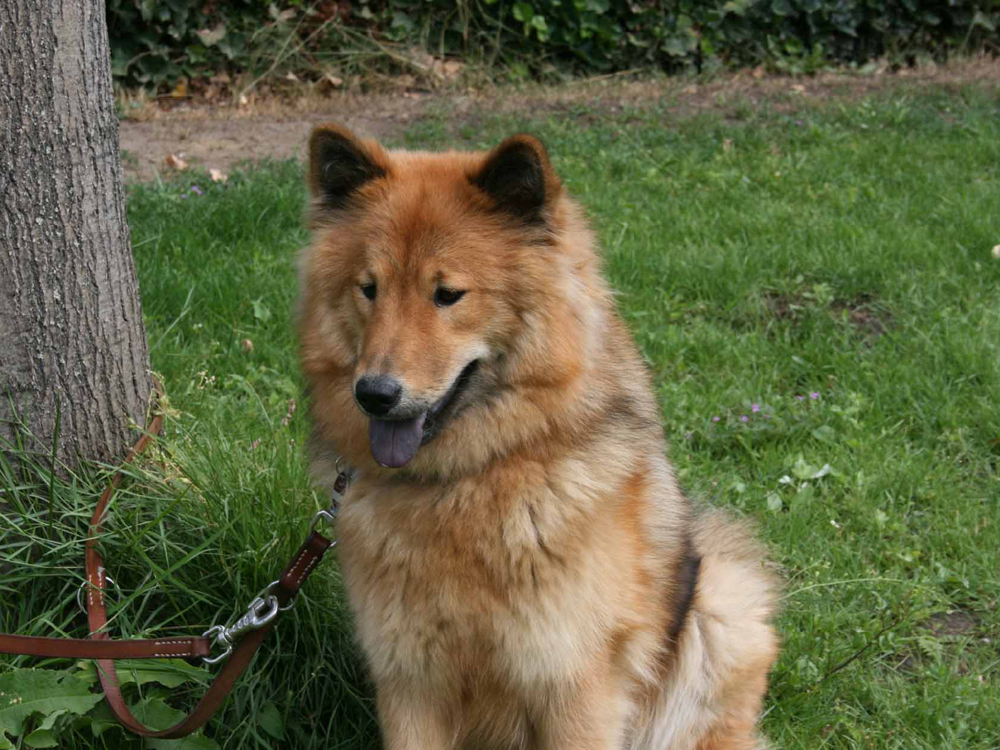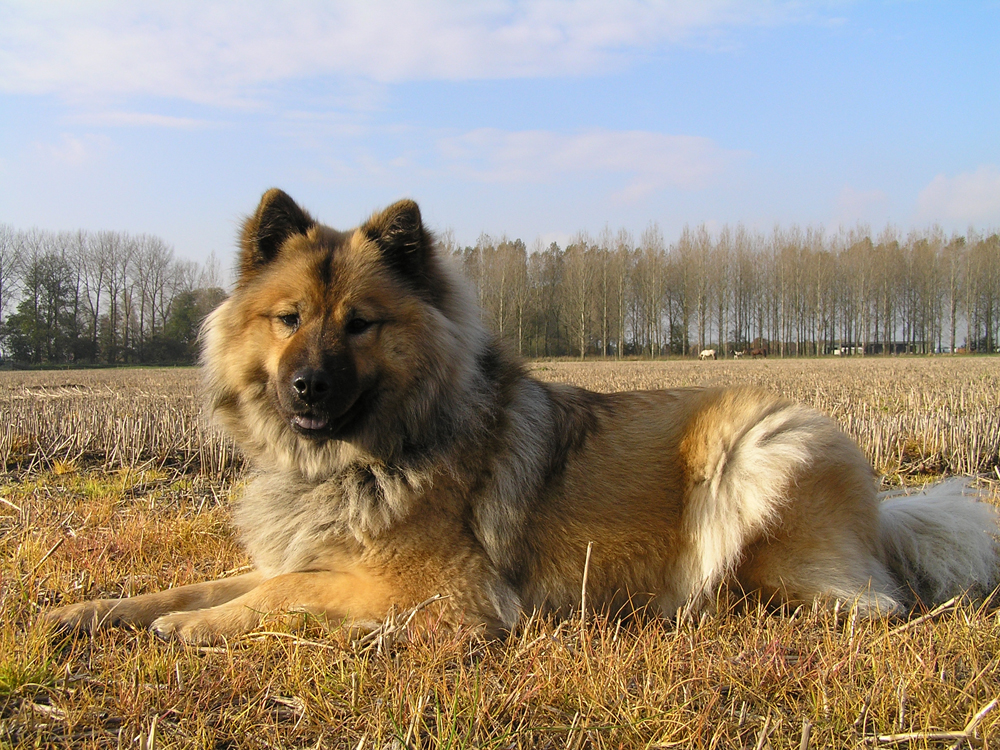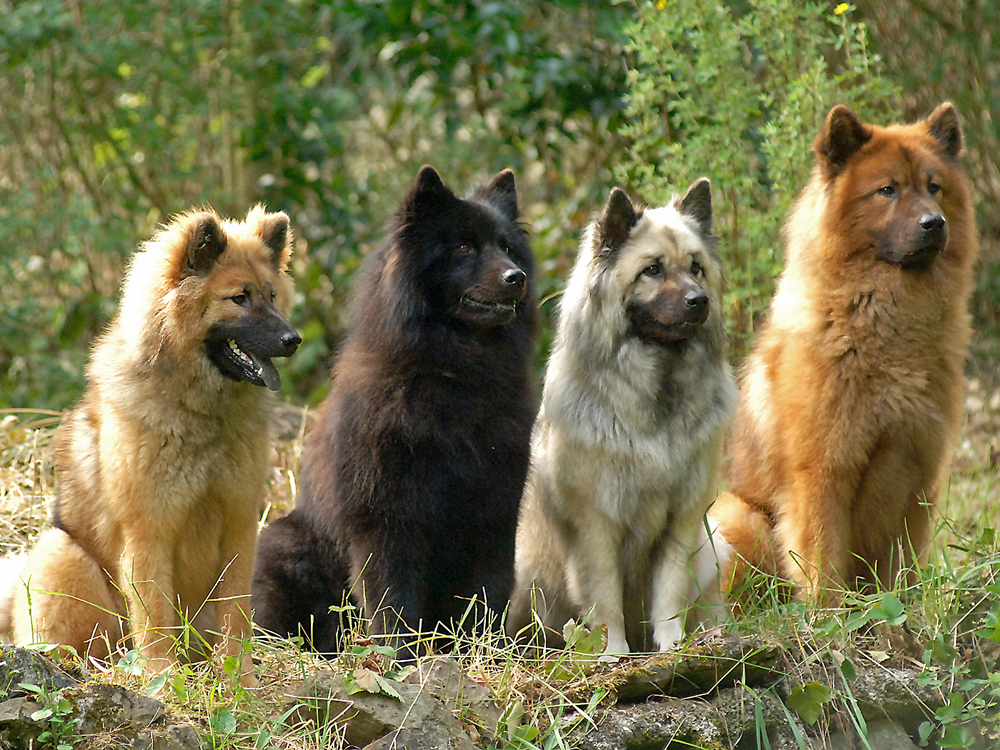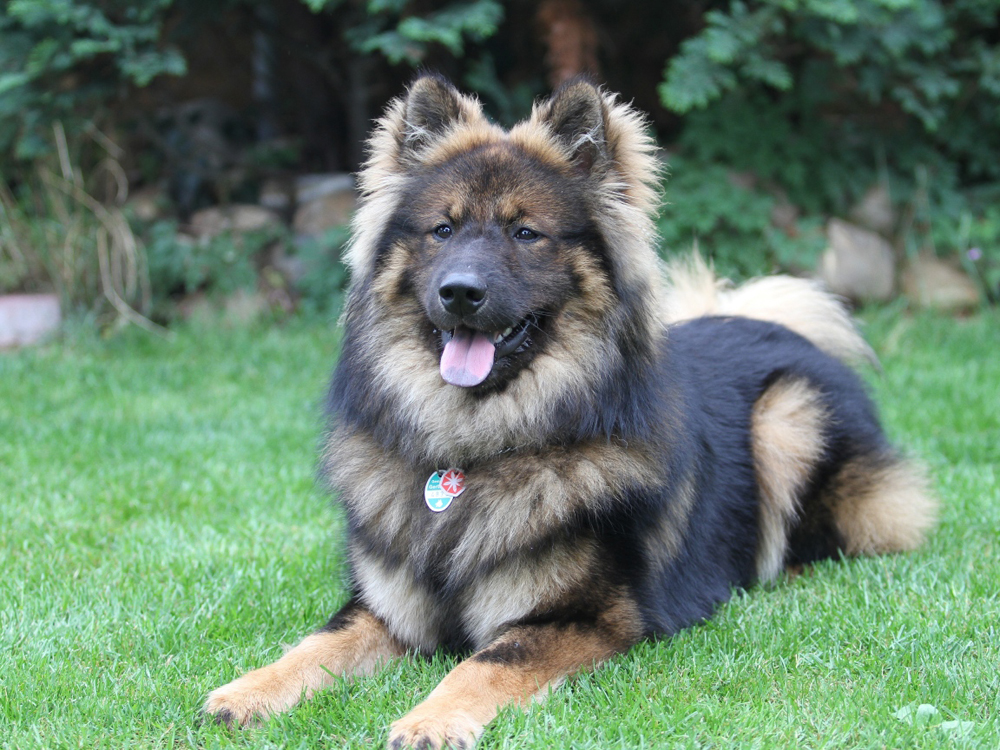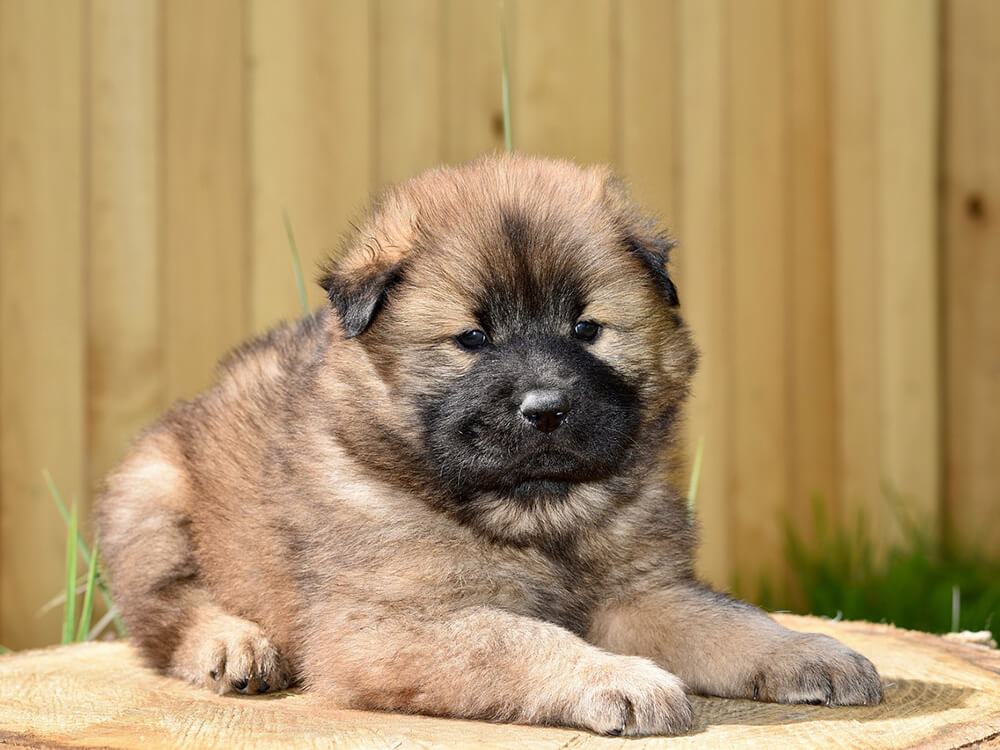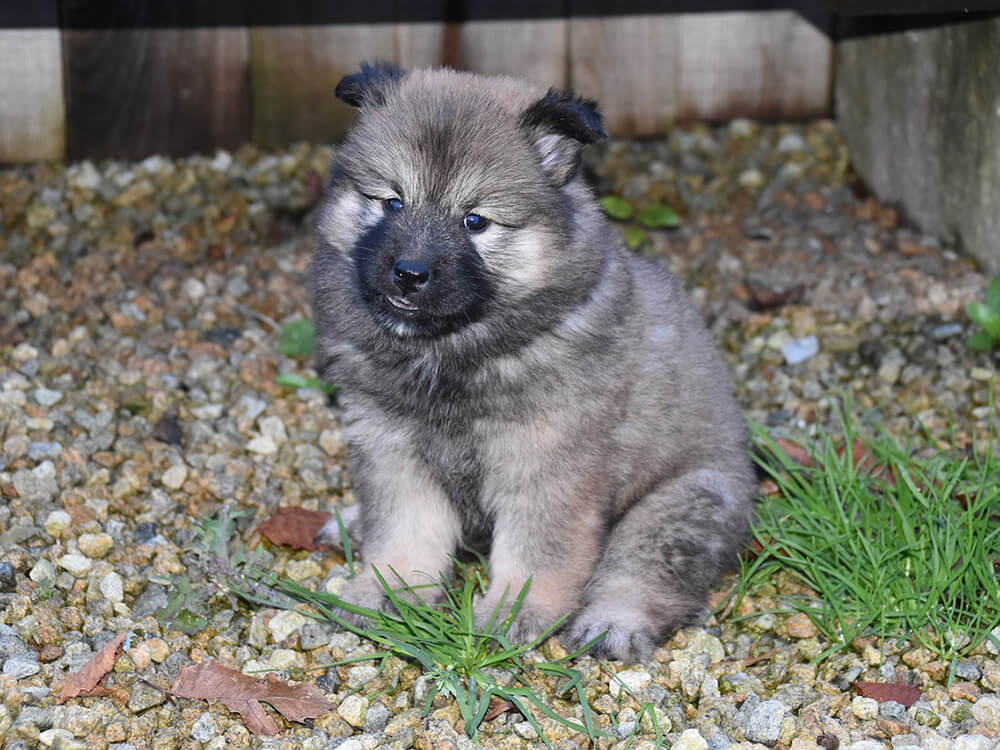
Eurasier Breed Pictures
Vital Breed Stats
| Height: | 52 - 60 cm M | 48 - 56 cm F |
| Weight: | 23 - 32 kg M | 18 - 26 kg F |
| Breed Group: | Terrier Dog Group |
| Life Expectancy: | 10 - 13 years |
| KC Registered: | No |
Breed Characteristics
| Size: |  |
| Grooming: |  |
| Exercise Level: |  |
| Trainability: |  |
| Barking Level: |  |
| Good with Children: |  |
| Good with other pets: |  |
| Affectionate: |  |
| Protective: |  |
| Cost to Keep: |  |
Give a thumbs up if you love the Eurasier

0
More About the Breed
History
Often referred to as a Eurasian, the Eurasier is a breed that originated from Germany. It is a product of the combined lineage of the Chow Chow and the Wolf Spitz (known as the "Wolf-Chow"). Its development is thanks to the breeders Julius Wipfel and Charlotte Baldamus from the 1960's in their desire to develop the ideal family companion dog that is calm and even-tempered that also commands respect. Twelve years later, Wipfel included the Samoyed in the mix to create the Eurasier breed seen today. In 1973, the breed was recognised by the German Kennel Club and the FCI and was then renamed to Eurasier after its European and Asian heritage.
The Eurasian is still a young breed and was only recognised as a pure breed by the United Kennel Club in 1996. Today, there are about 8,500 Eurasiers around the globe. However, just a limited number of the breed is in the UK.
Appearance
As intended, the Eurasier inherited its parent breed's appearance. It is medium-sized Spitzen, with a height of 48 to 61 centimetres and a weight of 40 to 70 pounds. Its wedge-shaped head is characteristic of its spitz breed. It has a flat skull and a slightly defined stop. Its dark, almond-shaped eyes that slant with a nice black rim reflects its intelligence. It has a pricked ears, triangular-shaped, medium and are set nicely apart on its head. The Eurasier has a blue-black tongue that is a distinctive feature adopted from its Chow Chow parentage.
When it comes to its build, the Eurasier has a firm and compact body with a straight and level top line. Its withers and the rest of the body are firm and muscled. The breed standard dictates that this dog breed must come with a thick undercoat and a medium to long loosely lying guard hair all over the body. Its tail, back of the front legs and hind legs should be covered with long hair, while the coat in the neck area must always be slightly longer than the body, but should never form a mane. Eurasiers can sport coats in the accepted breed colours such as fawn, red, wolf-grey, sable, black and tan, and solid black.
Grooming
Since the Eurasier sports a thick coat, just like any Spitz-type dogs, it is considered a high-maintenance dog breed. It is highly recommended to brush its coat daily to remove dead hair, matts and tangles. It doesn't help that Eurasiers shed throughout the year and more twice a year, during spring and autumn. In this case, frequent brushing is required more than the usual. It is also worth noting that Eurasiers are predisposed to eye disorders called Entropion, so make sure to include the eyes in your grooming regimen.
Regular checking and cleaning of ears and mouth are also important as neglect to both can lead to infections. Do remember, that grooming your dog is also an opportunity to check their health. Once you find anything that is not normal with your Eurasier, visit your veterinarian immediately.
Temperament
Intelligence
It's a family-pleaser, which means it is obedient and easy to train, which is why they are the best choice for first-time dog owners. However, it also needs its owners to spend as much time with them as possible. If your household is empty of human warmth for long periods throughout the day, then a Eurasier is not for you, else they suffer from separation anxiety.
When it comes to barking tendencies, the Eurasier is not much of a barker. It only barks when necessary and only to alert. Aside from its affectionate nature, this dog breed has the natural inclination to protect. It is vigilant, which also means it is a perfect watchdog. It is crucial that Eurasiers are socialised early, so they become well-rounded dogs. They are good around children, but their interaction with younger kids must be supervised. It is debatable whether the Eurasier holds any hunting instinct, but majority agrees that it gets along well with other pets if raised together.
Nutrition
- Senior and less active: up to 1,160 calories daily
- Typical adults: up to 1,310 calories daily
- Physically active/working dogs: up to 1,460 calories daily
Feeding
Health
Exercise
Cost of Ownership
Eurasier is a rare breed, and as it goes, you need to on a breeder's waiting list since only a few puppies are registered annually. On top of the waiting, its rarity also means you would have to pay from £800 to £1,300 for a well-bred pedigree puppy. The cost of getting a pet insurance is also considerably costly ranging from £20 to £40 a month. When it comes to making sure your Eurasier is healthy, veterinary consultations and basic procedures (vaccinations, boosters etc.) will likely set you back around £1,000 per year.
We should not forget about the food. Buying a high-quality dog food will cost you anywhere from £40 to £50 a month, excluding the treats. It is safe to say that you will have to spend an estimated £70 to £100 monthly to raise and care for a Eurasier.
Is an Eurasier Right for You?
- The Eurasier is a cross between the Chow Chow, the Wolf-Spitz and the Samoyed.
- It is bred to be an ideal companion dog and a good watchdog.
- It is affectionate and gentle in nature but can be excessively attached.
- Eurasiers have an excessive desire to please its owners, which makes them easy to train.
- They are ideal for first-time dog owners who can provide it with enough attention.
- Grooming-wise, it is a high-maintenance dog that requires daily brushing.
